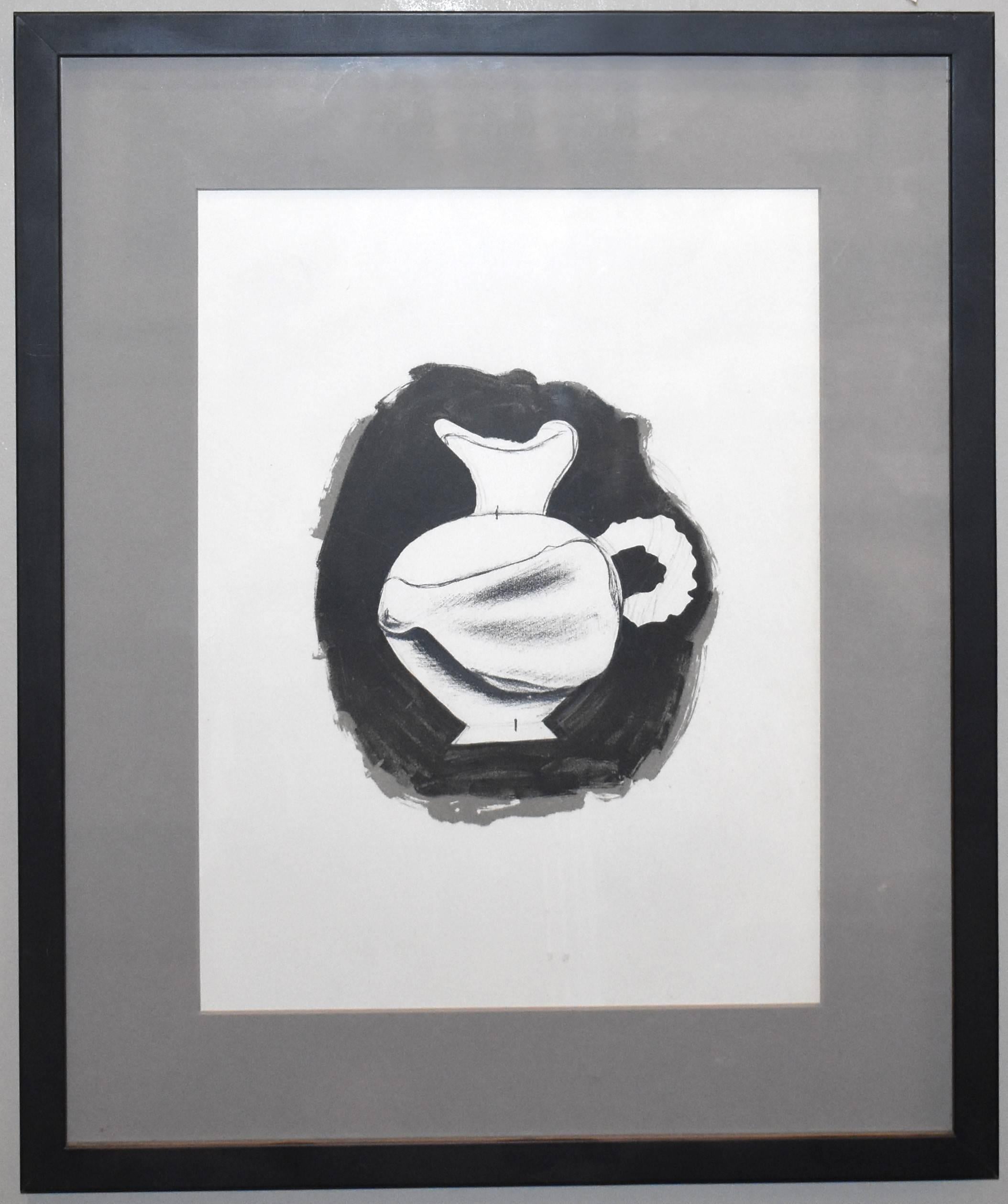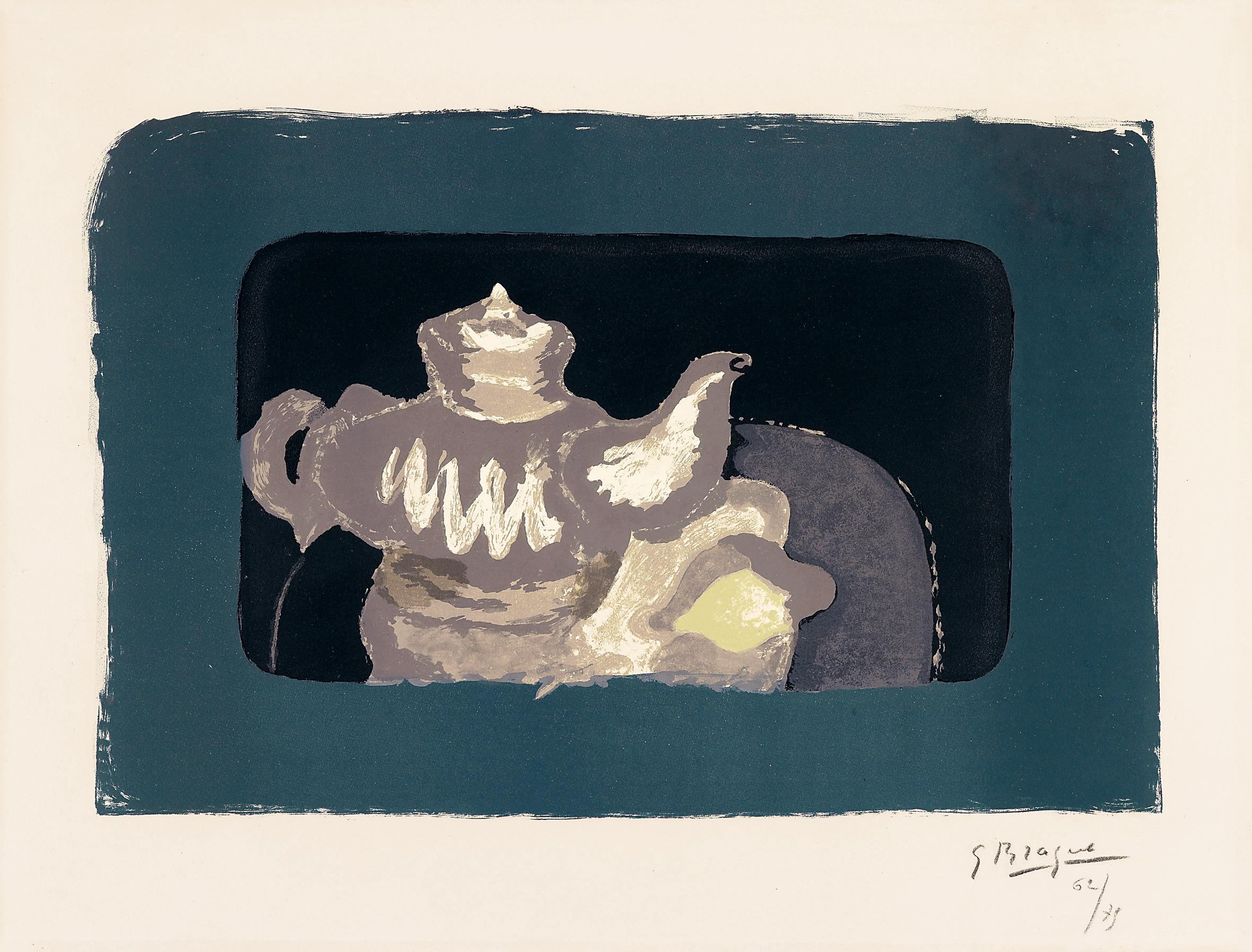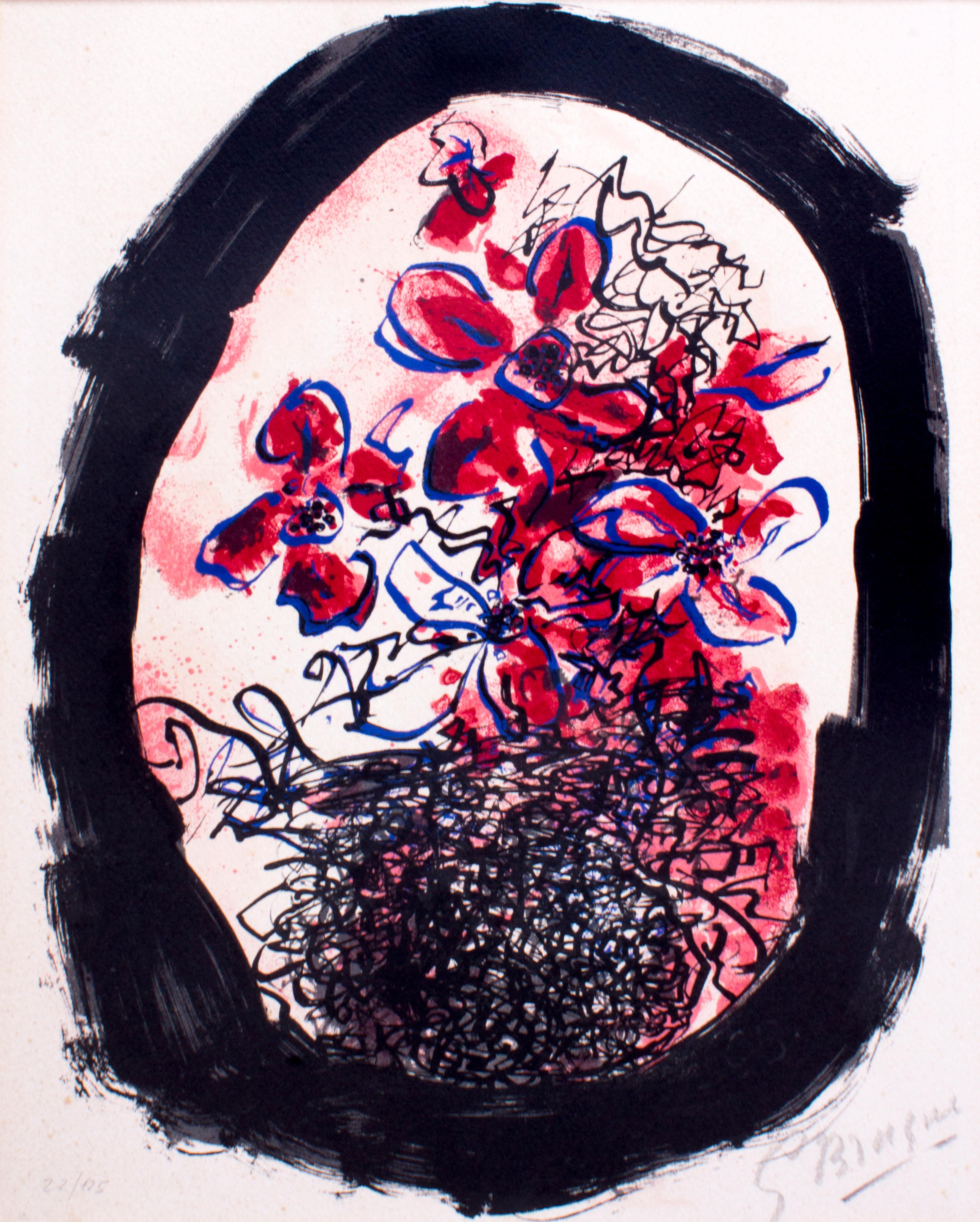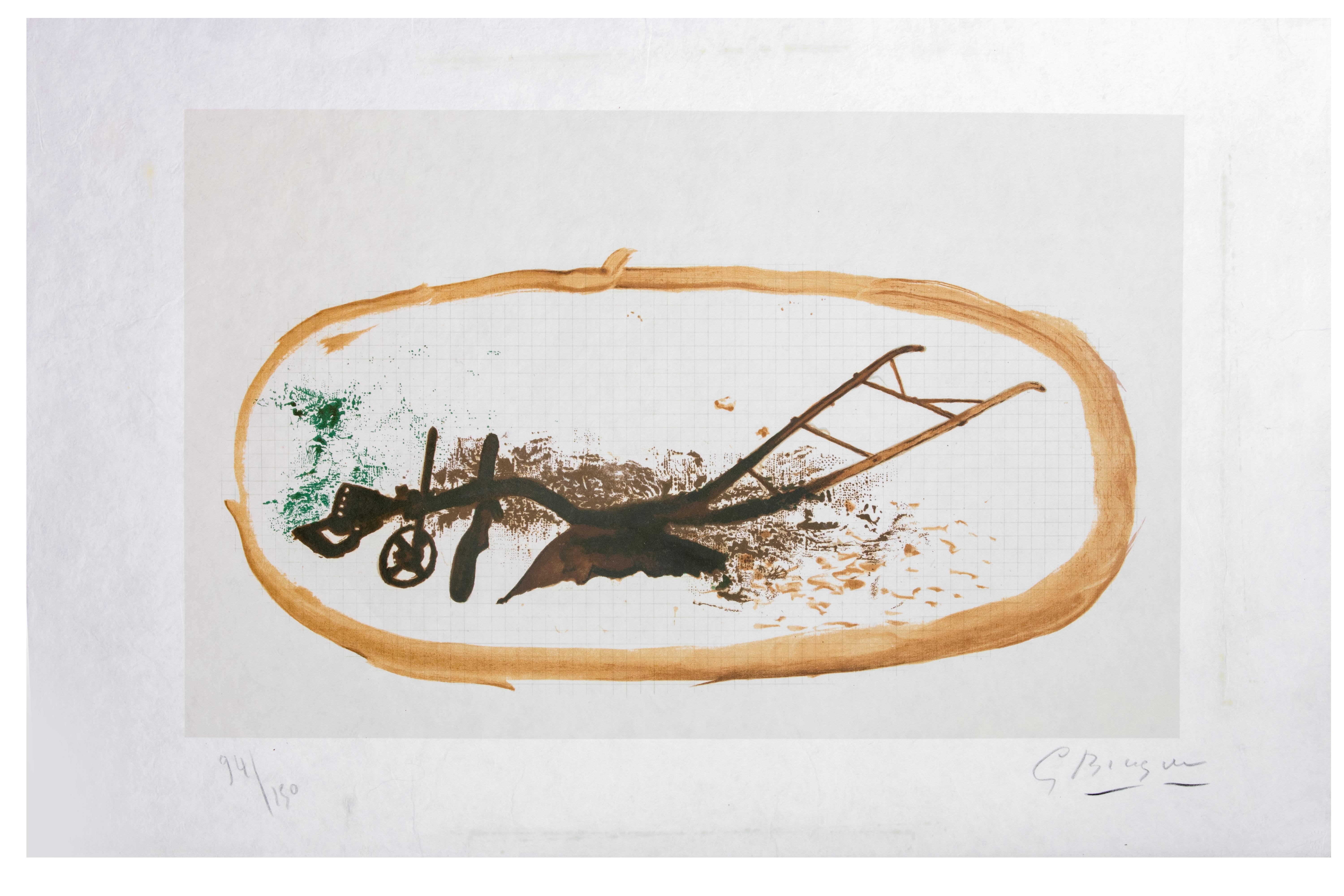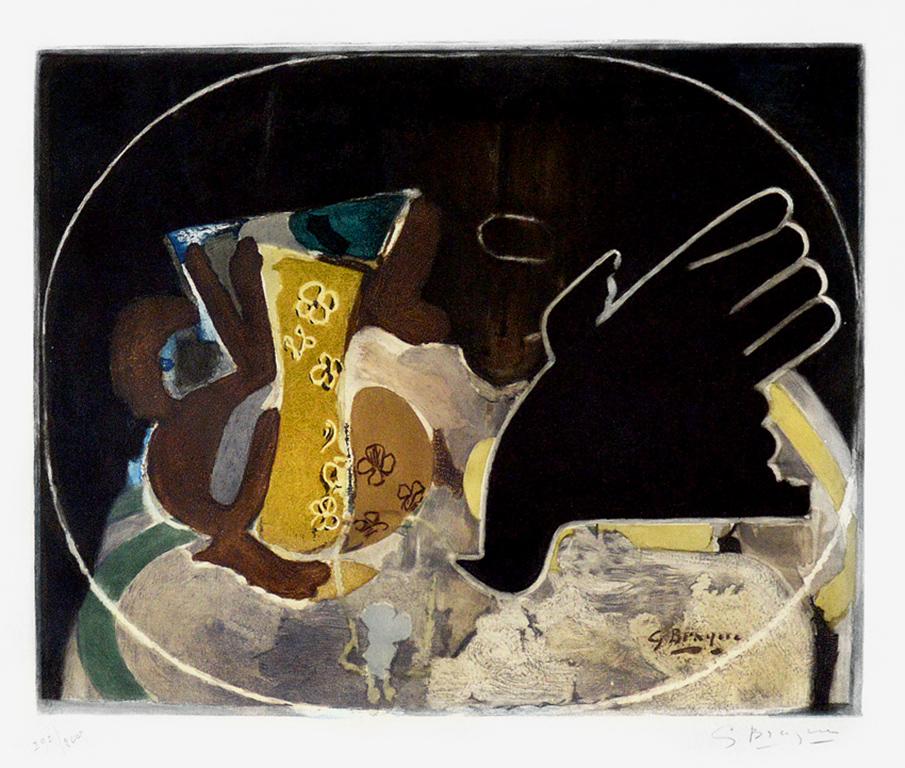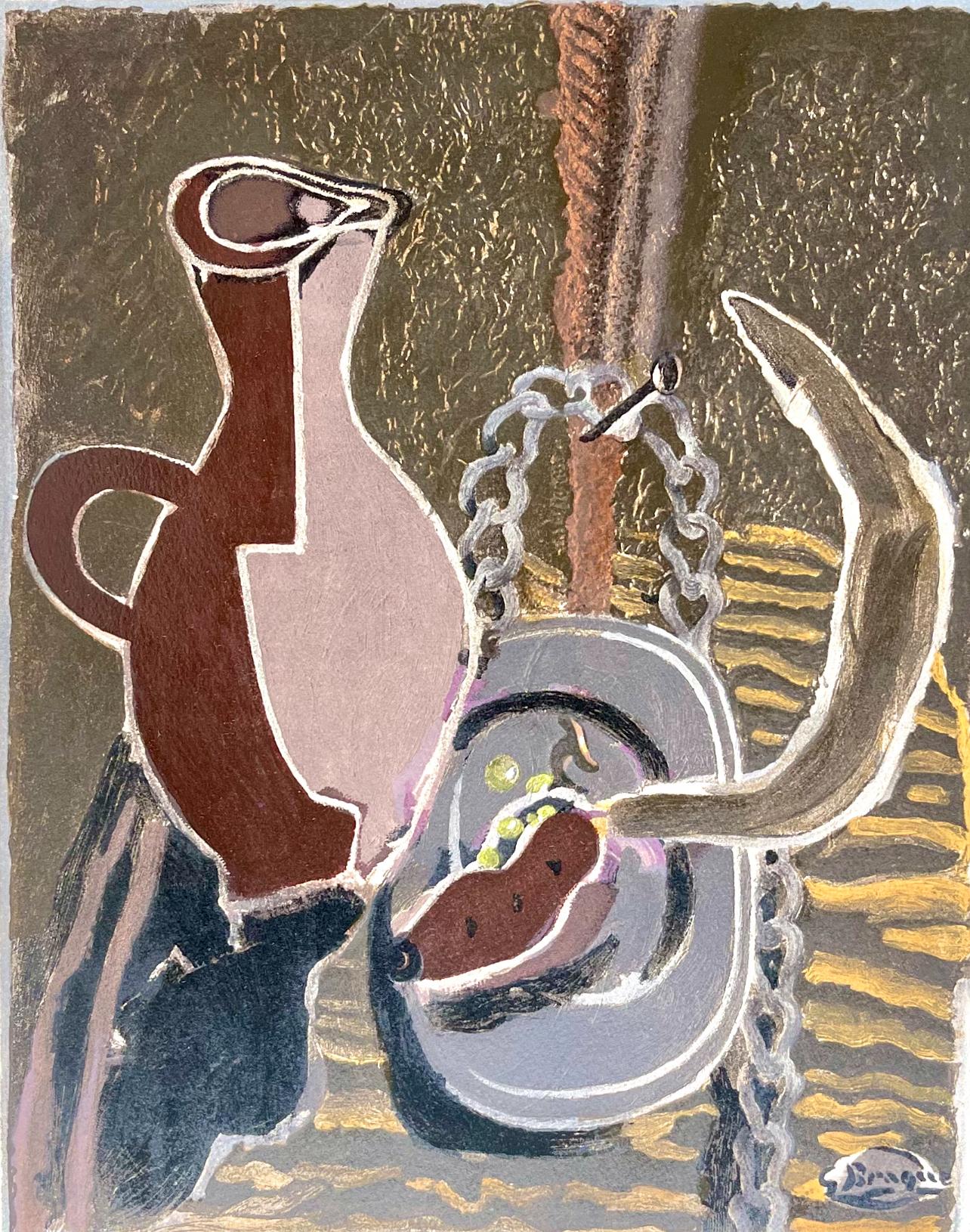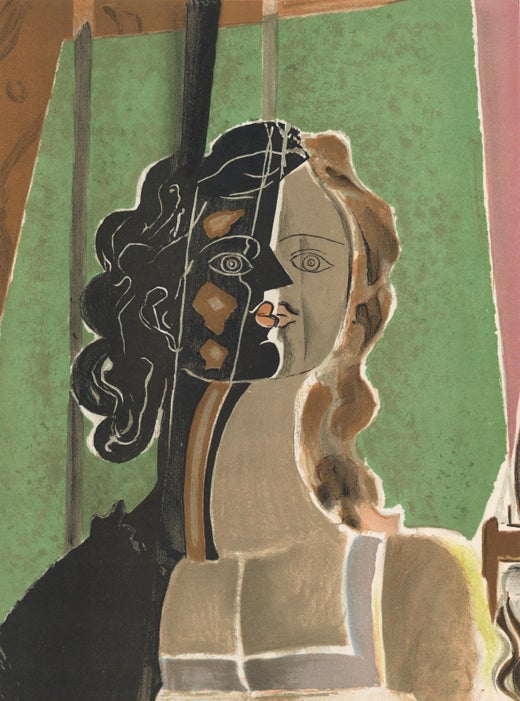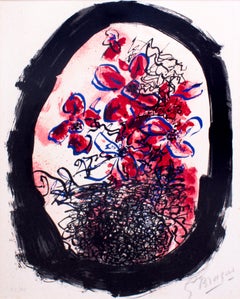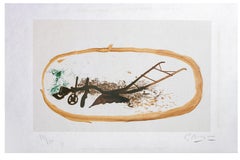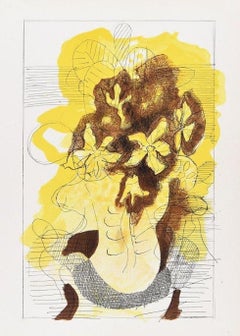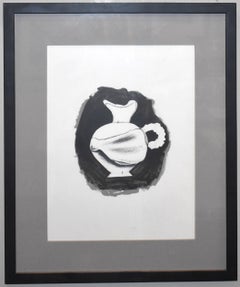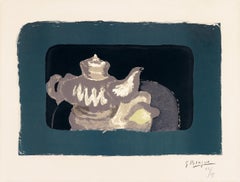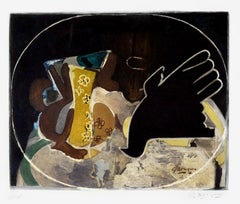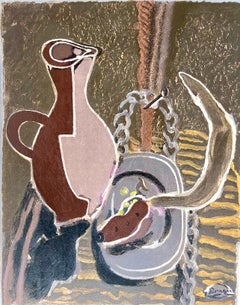Georges BraqueUntitled - Pitcher - Lithograph by Georges Braque - 19591959
1959
About the Item
- Creator:Georges Braque (1882 - 1963, French)
- Creation Year:1959
- Dimensions:Height: 15.36 in (39 cm)Width: 13.78 in (35 cm)Depth: 0.04 in (1 mm)
- Medium:
- Movement & Style:
- Period:
- Condition:Insurance may be requested by customers as additional service, contact us for more information.
- Gallery Location:Roma, IT
- Reference Number:Seller: M-1065341stDibs: LU65036178392
Georges Braque
Georges Braque was born in Argenteuil, France, in 1882. Braque lived much of his childhood and young adult life in Le Havre. He attended night classes at the art school from 1897–99 and then moved to Paris, where he obtained his license as a master decorator. From 1905–06, after studying at École des Beaux-Arts in Paris and having been influenced by the works of Henri Matisse, he began to paint in the way of Fauvism by using bright colors and taking advantage of the freedom of the composition. Paysage à L'Estaque (1906) was one of the prominent works of art made at this time.
The year 1907 was a significant time in Braque's development, wherein he visited the retrospective on Paul Cézanne and he came into contact with Picasso, who was very engrossed in the realization of Les Demoiselles d'Avignon at the time. At this point, Braque began nurturing a considerable interest in primitive art. After the First World War, Braque worked autonomously and developed a more personal style, which was characterized by vivid colors and textured surfaces. Braque painted still life, interior views, and ocean scenes. The Ateliers (1948–55) and Birds (1955–63) series were painted during this period. In 1948, he obtained his first award for painting at the XXIV Biennial in Venice.
- ShippingRetrieving quote...Shipping from: Grasse, France
- Return Policy
More From This Seller
View All1960s Modern Figurative Prints
Lithograph
1960s Modern Figurative Prints
Lithograph
1960s Fauvist Still-life Prints
Lithograph
1950s Cubist Abstract Prints
Lithograph
1930s Cubist Figurative Prints
Lithograph
1940s Cubist Figurative Prints
Paper, Lithograph
You May Also Like
1970s Still-life Prints
Lithograph
1940s Post-War Figurative Prints
Lithograph
1950s Modern Still-life Prints
Etching, Aquatint
1950s Modern Abstract Prints
Lithograph
1960s Modern Figurative Prints
Lithograph
1960s Modern Still-life Prints
Lithograph
